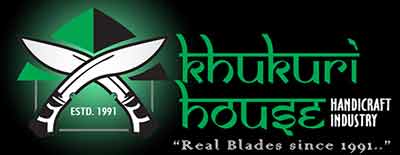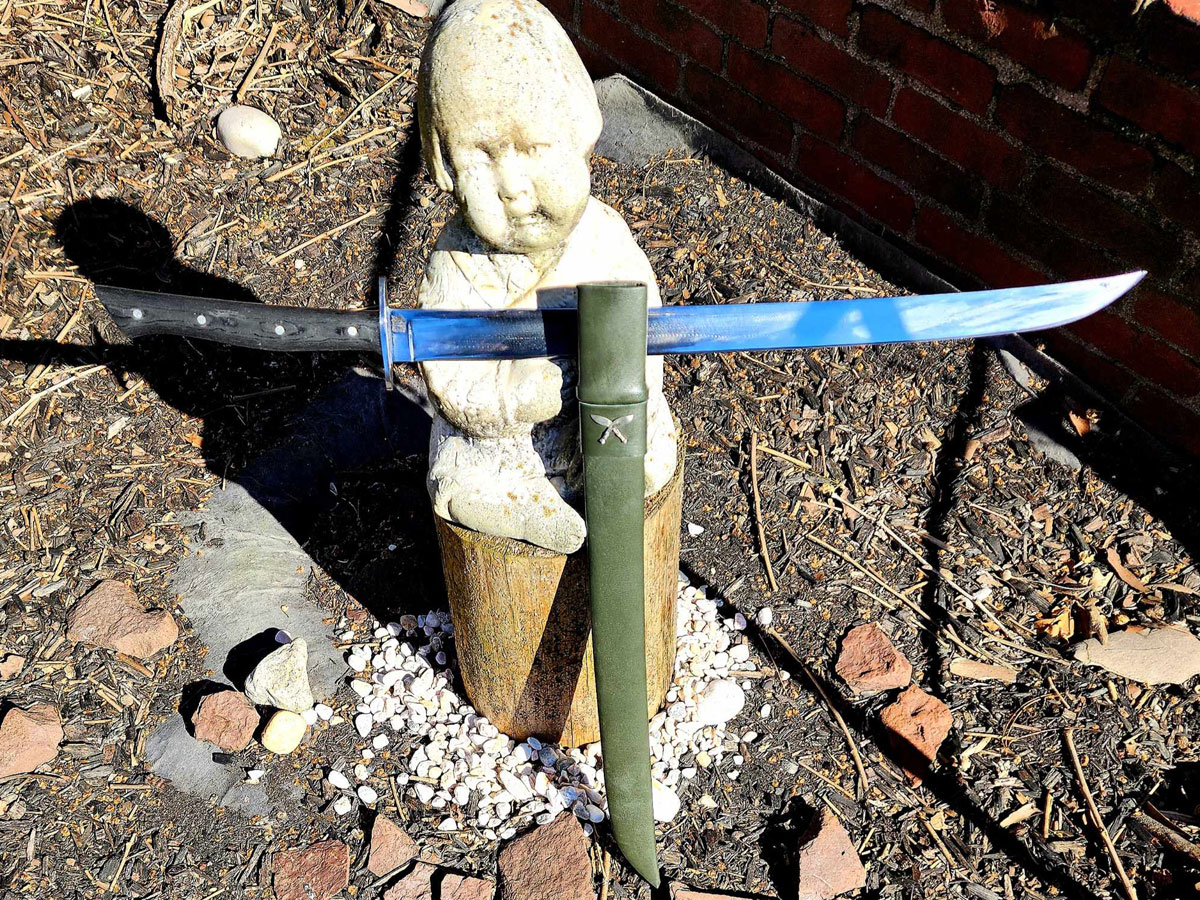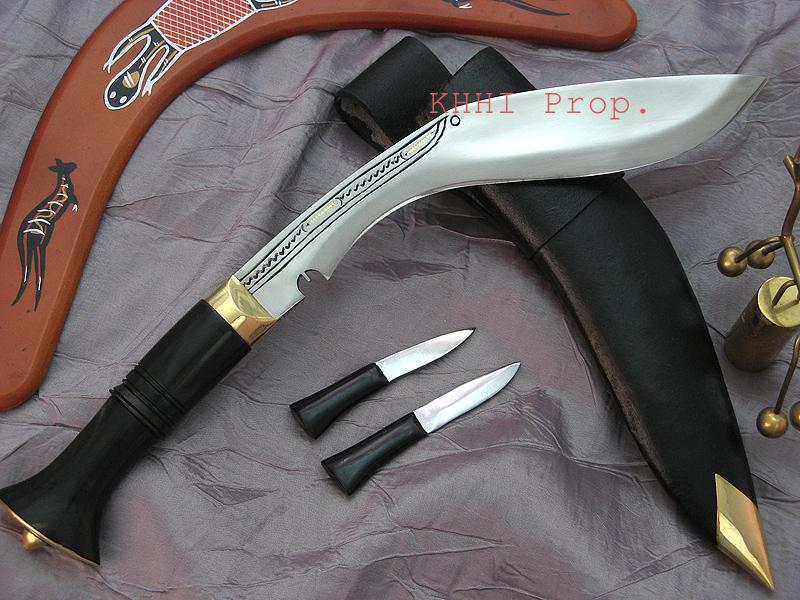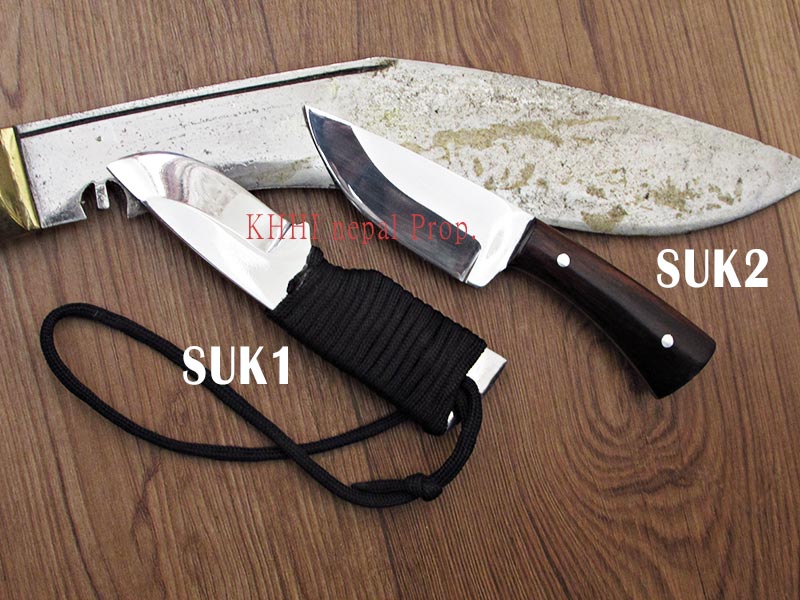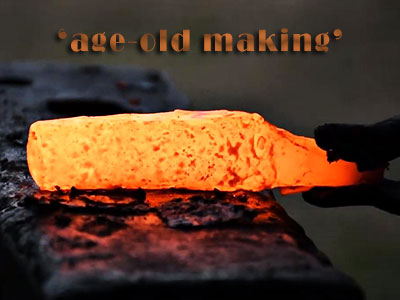Gurkhas Info
Khukuri of the Month
Blade Size (in): 2.5 in (SUKx 1)
Weight (gm): 100
USD 17.99
Recruiting For The Brigade of Gurkhas
- Home
- Recruiting For The Brigade of Gurkhas
Selection for “The Brigade of Gurkhas”; How British Gurkhas are selected? information and backdrop
the subject matter and time phrase of the article generally speaks of around 2002 AD
Gorkhas
After the famous and successful unification of the modern Nepal by the house of Gorkha led by the great king Prithivi Narayan Shah in around 1768-69, the expansion of the kingdom’s territory continued towards the south which brought the Gorkhas head on with the British East India Company which had already occupied the region. The Gorkhas kept advancing and invading the territories of the Company from all directions, namely, Terai in South, Sikkim in East and as far as Shimla in the Western region. Soon after, in order to stop the Gorkhas, East India Company had to use overwhelming troops, firepower and artilleries to restrict the Gorkhas and send them back and reclaim their territories. Finally the “Treaty of Sugauli” was signed between East India Company and King of Nepal in which a peace pact was signed along with a crucial agreement which gave British the right to recruit Gorkhas under their flagship and authority and thus recruitment started. But it was not until the Great Indian Mutiny in 1857, the Gorkha men were finally recognized and realized of their existence and importance because of their unswervingly loyalty, outstanding military prowess, fearsome courage and absolute strength to the British Force exhibited in the mutiny. Then soon the Gorkhas became the integral part of the British Indian Army. Later after the Indian Independency in 1947 some of the Gorkhas Regiments were transferred to the sole and direct ownership of the British and renamed them as the “British Gurkhas”, which continues till today.
British Gurkhas in particular:
After the "Treaty of Sugauli" in 1815 and even before, Gorkhas recruitment by British under their flagship had already begun. But back then Gorkhas were mere Back Up or Reserve Army and addressed as “Native Army”. It was only after the Great Indian Mutiny in which Gorkhas stood firm besides the British and helped crush the mutineers they were finally realized for their strength, presence and significance, and later British recognized them as the integral arm force of the British Indian Army. After that many Gorkha Battalions were formed and Gorkhas along side with British fought many campaigns, battles and wars hand in hand which continued till 1947. When India finally became independent from British Raj, Britain, India and Nepal signed a national level agreement in which all the existing battalions of Gorkha units were constituted and administered as finalized. 4 of them; 2nd, 6th, 7th and 10th regiments were transferred to Britain under their sole right and ownership and renamed it as the “Brigade of Gurkhas” and thus “British Gurkhas” was established, which continues till today. Interestingly when Gorkhas moved to Britain, the letter "O" was replaced by "U", "Gurkhas" – this is what we see as the first move by the British Govt. to accept Gorkhas as their own.
[read about Gurkhas in Detail ]
How “The Brigade of Gurkhas” are recruited/ selected? What it takes to become a "Gurkha"?
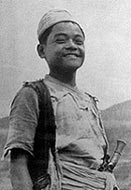 Selction process is tough and it is truly a case of ‘Many come but few are chosen’. Recruiting takes place once a year and for each one of just over 200 places there are several thousand volunteers. To be more accurate, on average some 25,000 young, Nepalese hill-men apply each year to join the brigade, a figure which cannot be matched by any other military formation in the world. To these young men, winning entry to the British Army’s Brigade of Gurkhas is an honor and a source of great traditional family pride. The challenge of gaining, a place, however, is a daunting one. On average only 230 Gurkhas are recruited each year, undergoing a lengthy and rigorous training before joining their respective regiments or Corps units. For those who are successful, service with the British Gurkhas offers a well-paid career which will bring financial security and the ability to support their families, many of whom rely on the severely limited income from hill-farming, as well as a pension on retirement.
Selction process is tough and it is truly a case of ‘Many come but few are chosen’. Recruiting takes place once a year and for each one of just over 200 places there are several thousand volunteers. To be more accurate, on average some 25,000 young, Nepalese hill-men apply each year to join the brigade, a figure which cannot be matched by any other military formation in the world. To these young men, winning entry to the British Army’s Brigade of Gurkhas is an honor and a source of great traditional family pride. The challenge of gaining, a place, however, is a daunting one. On average only 230 Gurkhas are recruited each year, undergoing a lengthy and rigorous training before joining their respective regiments or Corps units. For those who are successful, service with the British Gurkhas offers a well-paid career which will bring financial security and the ability to support their families, many of whom rely on the severely limited income from hill-farming, as well as a pension on retirement.
Sadly, those who are not selected often fear that their failure will bring shame on their families and as a result they do not return home. Instead some seek a job in the streets of Kathmandu (capital) while others drown their sorrows in alcohol. In the past a small number committed suicide by jumping form a bridge in Pokhara, before a safety net was placed under it to prevent further such tragedies. Other, more determined, individuals make their way to India to join the Indian to join the Indian Army’s Gurkha Brigade, which to this day still includes the 1 st, 3 rd, 4 th, 5 th, 8 th and 9 th Gurkha Rifles in its order of battle.
'kaphur hunu vanda marnu jati...'
'it is better to die than to be a coward..' Gurkha Motto
The Gurkhas homeland of Nepal is an independent kingdom, bounded to the north by Tibet, to the east by Sikkim and West Bengal and to the south and west by India. Apart from the area of the Terai along the southern border, the country is situated entirely in the Himalayas and contains some of the highest mountains in the world, including the “Everest”. It depends on a predominantly rural economy with agriculture providing the main source of employment in the towns and villages that nestle in the shadows of some of the world’s most breathtaking scenery. It is these areas in the foothills of the Himalayas that have traditionally been the recruiting grounds for The Brigade of Gurkhas with the Mount and Hill regions providing the greatest numbers. The recruits come from two distinct religious and tribal groupings which, senior Gurkha officers say, can sometimes influence their character during their military career.
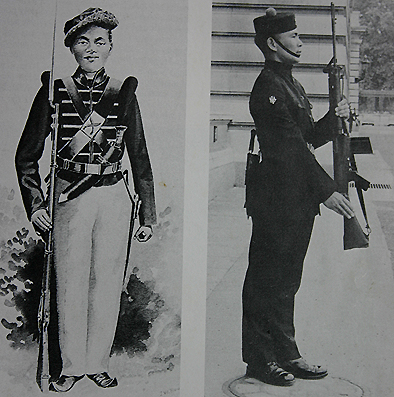 The headquarters of The Brigade of Gurkhas is in the Nepalese capital Kathmandu, which lies in the heart of Nepal. This is the main area of population and is home to an estimated one million people. British Gurkhas Nepal, or BGN as it is popularly known, is situated in Jawalakhel, Kathmandu. It exists to provide a line of communication to support the brigade worldwide and is responsible for recruiting and discharging, payment of pensions and the welfare of serving personnel and ex-servicemen. The brigade, directly and indirectly, is estimated to be the fourth biggest foreign currency earner for the Nepalese economy.
The headquarters of The Brigade of Gurkhas is in the Nepalese capital Kathmandu, which lies in the heart of Nepal. This is the main area of population and is home to an estimated one million people. British Gurkhas Nepal, or BGN as it is popularly known, is situated in Jawalakhel, Kathmandu. It exists to provide a line of communication to support the brigade worldwide and is responsible for recruiting and discharging, payment of pensions and the welfare of serving personnel and ex-servicemen. The brigade, directly and indirectly, is estimated to be the fourth biggest foreign currency earner for the Nepalese economy.
BGN comes under the direction of Headquarters land Command in Britain. It is commanded by a full colonel who is also the British Defense Attaché in Kathmandu as well as being in overall command of the three Gurkha training posts of British Gurkhas Kathmandu, British Gurkhas Pokhara and British Gurkhas Itahari. British Gurkhas Kathmandu (BGK) is co-located with HQ BGN and is the focus for transit, in–service welfare, re-orientation, discharge, resettlement and payment of pensions.
'Jai Mahakali Jai Gorkha!!
Aayo Gorkhali ... 'Here comes the Gorkhali...'
Meanwhile to the west, close to Annapurna range, there is a British Gurkha centre based in the remote town of Pokhara, which has a population of some 65,000 and takes about eight hours to reach by bus from Kathmandu. British Gurkhas Pokhara (BGP) is the centre that coordinates recruiting countrywide and is where the selection process is conducted annually. Pensioners’ records are held there and a pension paying officer is based there as well, as is the headquarters of the Gurkhas Welfare Scheme.
In the east of Nepal is British Gurkhas Itahari (BGI), a small centre housing a pension paying office and a movement detachment to facilitate BGN’s operation in that part of the country.
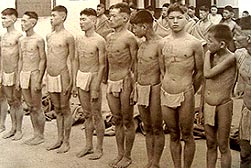 The selection process begins months before the potential recruits arrive at Pokhara with a process known as Galla Selection. ‘Galla’ in Nepali means somebody who provides a commodity and the men who select the potential recruits in the hills are known as “Galla Wallahs”. These are ex-Gurkhas, normally retired senior NCOs, and each has an area where he is responsible for finding recruits, after a briefing from the recruiting officer in April, they will tour their respective areas between May and September, making their selection from the thousands of volunteers. The next phase for the potential recruits is a move to Pokhara for Central Selection, which takes place in December and January. This is the most rigorous part of the process and involves a full medical by a doctor including a chest x-ray and wide range of intensive physical and mental tests. Here, one of the first tasks of British Officers is to establish the true age of each applicant- in the past many have been underage and have presented false evidence. In one well-known case, a young boy tried on six occasions to achieve a place in The Brigade of Gurkhas, succeeding on his sixth attempt when the staff at Pokhara were satisfied that he had reached his eighteenth birthday.
The selection process begins months before the potential recruits arrive at Pokhara with a process known as Galla Selection. ‘Galla’ in Nepali means somebody who provides a commodity and the men who select the potential recruits in the hills are known as “Galla Wallahs”. These are ex-Gurkhas, normally retired senior NCOs, and each has an area where he is responsible for finding recruits, after a briefing from the recruiting officer in April, they will tour their respective areas between May and September, making their selection from the thousands of volunteers. The next phase for the potential recruits is a move to Pokhara for Central Selection, which takes place in December and January. This is the most rigorous part of the process and involves a full medical by a doctor including a chest x-ray and wide range of intensive physical and mental tests. Here, one of the first tasks of British Officers is to establish the true age of each applicant- in the past many have been underage and have presented false evidence. In one well-known case, a young boy tried on six occasions to achieve a place in The Brigade of Gurkhas, succeeding on his sixth attempt when the staff at Pokhara were satisfied that he had reached his eighteenth birthday.
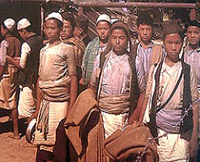 The physical standards demanded of Gurkhas recruits are extremely high and would daunt many potential recruits in Britain. The tests include 13 heaves to a chest bar and 25 sit-ups in one minute and then to carry on until unable to do so any further (one Gurkha is remembered for doing 400 times). The recruits must then run 1 ½ miles in 14 minutes, this being followed immediately by a further 1 ½ miles in 10 minutes. Finally they must run up and down in 1,800-ft steep hill, carrying 75l lb, completing the test in 35 minutes.
The physical standards demanded of Gurkhas recruits are extremely high and would daunt many potential recruits in Britain. The tests include 13 heaves to a chest bar and 25 sit-ups in one minute and then to carry on until unable to do so any further (one Gurkha is remembered for doing 400 times). The recruits must then run 1 ½ miles in 14 minutes, this being followed immediately by a further 1 ½ miles in 10 minutes. Finally they must run up and down in 1,800-ft steep hill, carrying 75l lb, completing the test in 35 minutes.
Central Selection lasts for four and half days, at the end of which the recruiting officer has the difficult task to informing those who have not made the grade. Some are rejected owing to the fact that they are underweight, others because they are too young or are physically unfit for service. They are never told the reason for their failure but all are invited to return the following year to try again. All are given a cash allowance to meet the expense of getting back to their villages
High in the hill villages, an ever-dwindling number of Second world war veterans still delight in telling stories about recruiting during Britain’s time of dire need. As recounted in earlier chapters, the 20 regular battalions of the Indian Army were doubled, then almost trebled to a total of 55 before the war in the Far East ended in 1945.
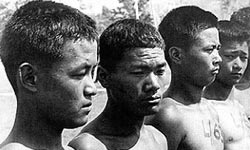 In 2002 almost 25,000 young men from all over Nepal applied for a mere 275 places to join the British Gurkha Army or the Gurkha Contingent of the Singapore Police Force (GCSPF). After the painstaking selection processes undertaken by the galla wallahs and Area Recruiting Officers (AROs) in various parts of Nepal, only 792 men were given gate passes to come to British Gurkha Camp Pokhara (BGP) for Central Selection. Of those, only some 200 or so would win places in The Brigade of Gurkhas. They are the fortunate ones who will sign up for service in the Army, being attested at a simple ceremony in Pokhara; with a picture of Her Majesty The Queen in the background, they swear allegiance to the British Crown for an initial period of four years. At this juncture the recruits are introduced to British military uniform; for the majority this will be the first pair of boots they have ever owned.
In 2002 almost 25,000 young men from all over Nepal applied for a mere 275 places to join the British Gurkha Army or the Gurkha Contingent of the Singapore Police Force (GCSPF). After the painstaking selection processes undertaken by the galla wallahs and Area Recruiting Officers (AROs) in various parts of Nepal, only 792 men were given gate passes to come to British Gurkha Camp Pokhara (BGP) for Central Selection. Of those, only some 200 or so would win places in The Brigade of Gurkhas. They are the fortunate ones who will sign up for service in the Army, being attested at a simple ceremony in Pokhara; with a picture of Her Majesty The Queen in the background, they swear allegiance to the British Crown for an initial period of four years. At this juncture the recruits are introduced to British military uniform; for the majority this will be the first pair of boots they have ever owned.
Thereafter the recruits are flown to Britain, where they travel to the Infantry Training Centre at Catterick, and the start of their training. Many have never traveled in a car, let alone an aircraft, and the transition needs a period of adjustment to life in the west. On arrival in the UK they are given cultural briefings about all aspects of life in Britain, ranging from food to the weather.
'Jai Mahakali, Ayo Gorkhali' - Gurkha Motto
Until 1948 recruits for The Brigade of Gurkhas were trained at regimental centers in India. From August 1951 onwards all recruit training was conducted at the Training Depot Brigade of Gurkhas at Sungei Patani in northern Malaya. In 1971, the Depot moved to Hong Kong as the Training Centre Brigade of Gurkhas and was based at Malaya Lines at Sek-Kong in the New Territories, where it remained until December 1994. At that point it was re-designated as the “Gurkha Training Wing (GTW)” and moved to Britain, where it was located at Queen Elizabeth Barracks, in Church Crookham, Hampshire.
In December 1999 the GTW moved to Catterick, where it joined the 3 rd Battalion, Infantry Training Centre. Redesignated Gurkha Company, it is based in Helles Barracks. The role of Gurkha Company is to mould a Nepalese youth into a Gurkha soldier trained to the highest standards of the British Army, who will live up to the traditions of The Brigade of Gurkhas. With a staff of 72 all ranks, the company currently has 231 recruits undergoing training, those being organized into two wings; A (Imphal) Wing and B (Meiktila) Wing. At Catterick, Gurkha soldiers are trained to be part of the modern British Army while retaining their proud heritage that is summed up in the Gurkha motto: “Khaphar hunnu bhanda marnu ramro nai jaati – it is better to die than to be a coward”.
Gurkhas return to Nepal once every three years of five months’ leave. They are also entitled to one married accompanied tour of between two and three years in their first fifteen years of service, and permanent accompanied service once they reach the rank of color sergeant. At the end of their service they are discharged in Nepal under the provision of the Tri-Partite Agreement. On returning to their home country for the last time, all personnel attend a six-day reorientation course run by British Gurkhas Kathmandu. This includes lectures on local government, taxation and other issues which may have changed in their absence. They will be discharged after taking any leave due to them.There are currently over 25,000 service pensioners and their widows in Nepal and BGN pays pension and remittances worth over pound 30 million annually. As mentioned earlier, there are three main payment offices in Kathmandu, Pokhara and Itahari, and about 55 per cent of ex-servicemen collect their pension from them. Young British officers used to be sent out into the hills to pay pensions annually but now, in order to allow pensioners in the more remote areas to collect their pensions more easily and more frequently, payments are made quarterly from the Area Welfare Centers run by the Gurkha welfare Scheme.
“ As I write these last words, my thoughts return to you who were my comrades, the stubborn and indomitable peasants of Nepal. Once more I hear the laughter with which you greeted every hardship. Once more I see you in your bivouacs or about your fires, on forced march or in the trenches, now shivering with wet and cold, now scorched by a pitiless and burning sun. Uncomplaining you endure hunger and thirst and wounds; and at the last your unwavering lines disappear into the smoke and wrath of battle. Bravest of the brave, most generous of the generous, never had country more faithful friends than you. ”
- Professor Sir Ralph Turner, MC, who served with the 3rd Queen Alexandra's Own Gurkha Rifles in the First World War
Share
